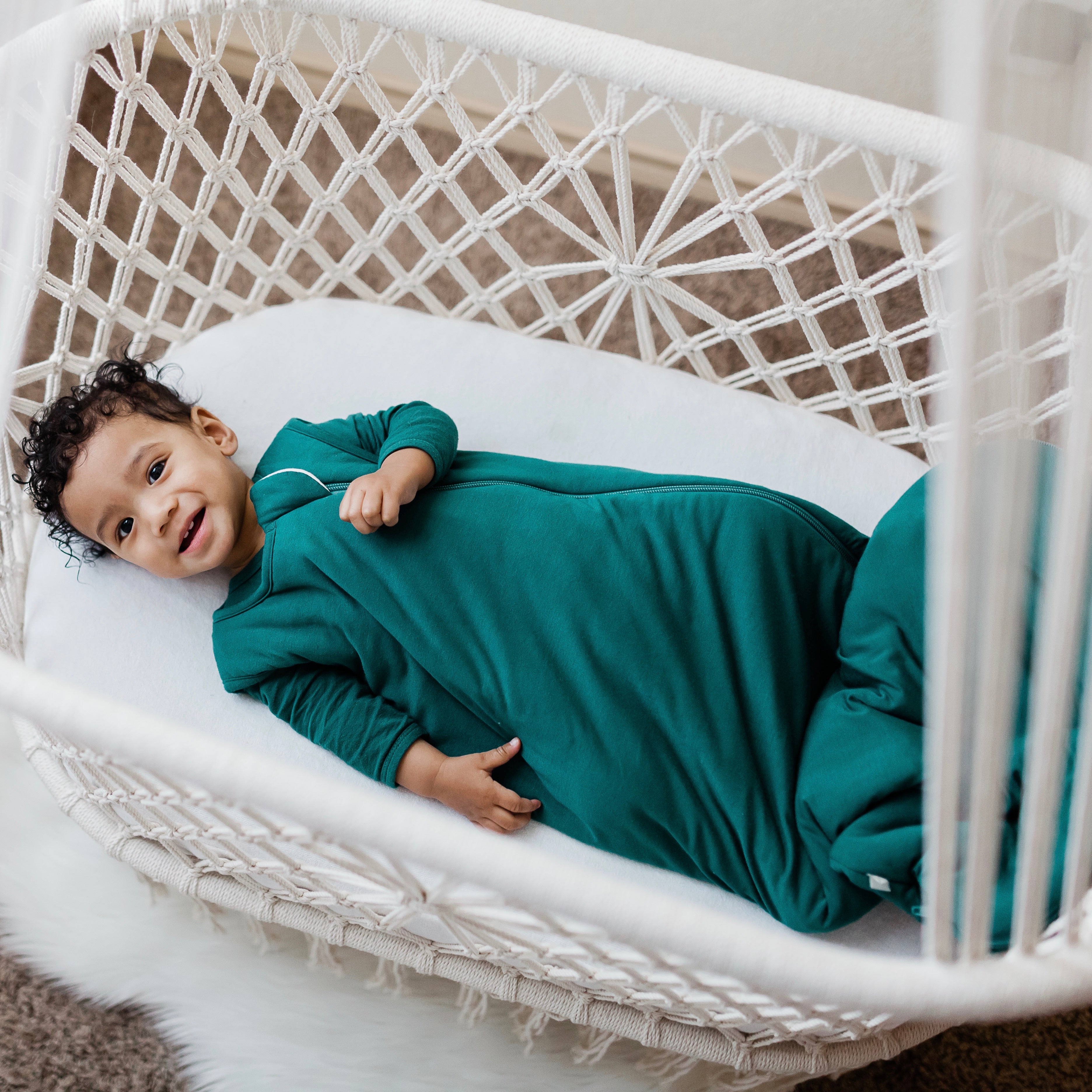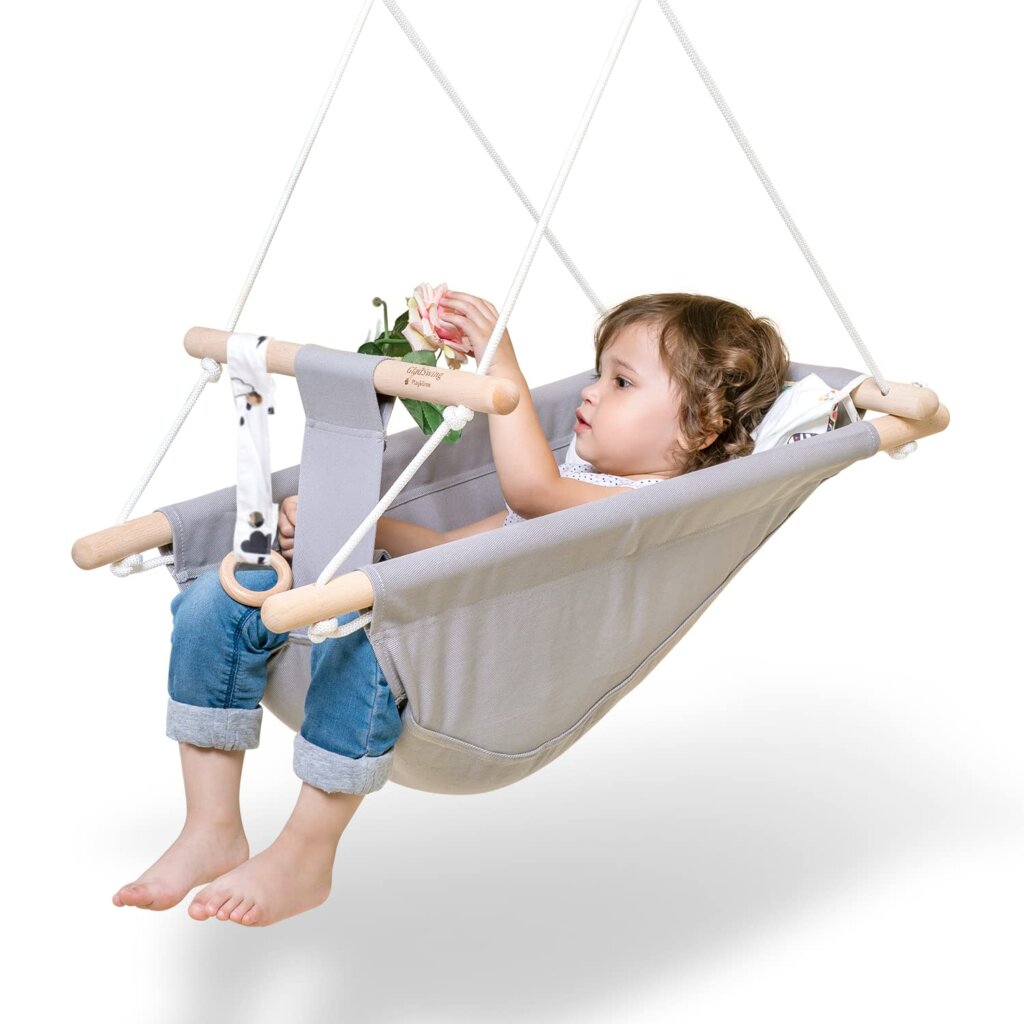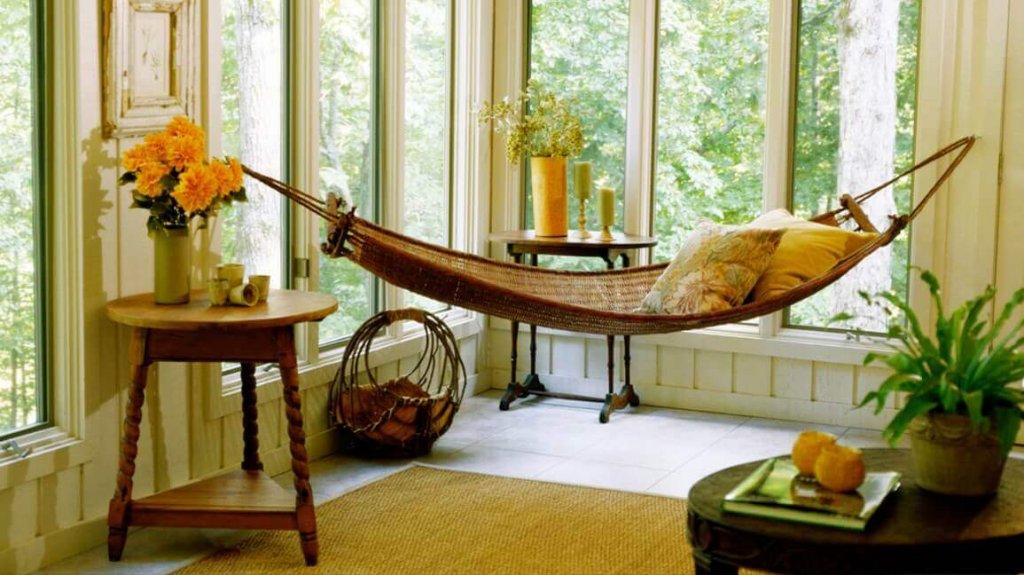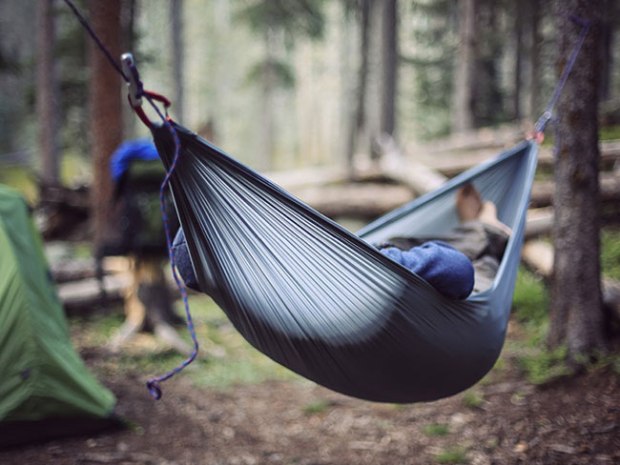- 8 Airplane Footrest Hammock!Travel comfortably - October 9, 2023
- top 7 Pool Float Water Hammock for a Relaxing Summer - October 9, 2023
- top 5 Space SaverSingle Hammock Stand Maximize Comfort and Space - October 9, 2023
Yes, a child can sleep in a hammock that does not have spreader bars, such as nylon or Brazilian hammocks. These types of hammocks hang loosely and are less likely to flip over.
However, it is important to be cautious of hammocks with excessive material, netting, and holes, as children can get stuck in them. It’s best to ensure the hammock is safe and secure before allowing a child to sleep in it.
Sleeping in a hammock can have its benefits, but it is always recommended to consult a doctor if considering nightly use, as it may cause back pain or poor posture. Overall, proper precautions should be taken to ensure the safety and comfort of the child while using a hammock for sleeping.
The Safety Concerns Of Children Sleeping In Hammocks
The Risks Of Spreader-bar Hammocks For Children
In recent years, hammocks have become a popular alternative for children’s sleep, especially for outdoor enthusiasts and parents seeking a cozy and unique sleeping experience for their little ones. However, it is crucial to consider the safety concerns associated with children sleeping in hammocks, particularly those equipped with spreader bars. Spreader-bar hammocks, although commonly used by adults, may pose certain risks for children.
Unlike nylon or Brazilian hammocks that hang loosely, spreader-bar hammocks are characterized by a sturdy wooden or metal bar on each end that keeps the hammock spread open. While these bars provide stability and comfort for adults, they can be problematic for children. The size and weight of young children make it easier for them to tip over in spreader-bar hammocks, increasing the risk of falls and injuries. Therefore, it’s best to avoid using spreader-bar hammocks for children to ensure their safety.
Getting Stuck: Material, Netting, And Holes In Hammocks
Another safety concern arises from the material, netting, and holes present in hammocks. Children can often get tangled or caught in excessive material, intricate netting, or holes, leading to potential harm or discomfort. It is essential to choose a hammock with child-friendly features that minimize the risk of entanglement or injury.
When selecting a hammock for your child, opt for one made with durable yet soft materials that reduce the chances of rips or tears. Avoid hammocks with intricate netting designs or holes that small fingers and limbs can get caught in. Pay attention to the quality and craftsmanship of the hammock to ensure it is baby-safe and secure for your child’s peaceful sleep.
Choosing The Safest Hammock For Children
Sleeping in a hammock is not only a fun experience for children, but it can also provide a cozy and comfortable sleeping environment. However, it’s crucial to prioritize safety when selecting the right hammock for your little one. In this article, we will explore two types of hammocks that are considered safe for children, namely nylon hammocks and Brazilian hammocks.
Nylon Hammocks: A Safer Option
When it comes to ensuring the safety of your child while sleeping in a hammock, nylon hammocks are an excellent choice. Nylon hammocks hang loosely, providing a comfortable sag that minimizes the risk of flipping over. These hammocks do not have spreader bars, which makes them even safer for children.
One key advantage of nylon hammocks is that they have a sturdy construction, capable of accommodating the weight of a child without compromising on stability. The material used, durable and tear-resistant nylon, ensures that the hammock can withstand regular use without easily wearing out.
In addition, nylon hammocks often come with safety features such as reinforced stitching and secure attachment points. These features further enhance the overall safety of the hammock, giving parents peace of mind while their child indulges in restful sleep.
Brazilian Hammocks: Ensuring Stability And Comfort
Another type of hammock that parents can consider for their children is the Brazilian hammock. Brazilian hammocks are known for their stability and comfort, making them a great choice for little ones.
These hammocks are usually handwoven with high-quality cotton or fabric that provides excellent support. Brazilian hammocks also do not have spreader bars, making them safe and comfortable for children to sleep in.
Furthermore, Brazilian hammocks are designed with a tight and secure weave, ensuring that children won’t get trapped in excess material or encounter any potential hazards. The tight weave provides stability and helps prevent accidental falls or entanglements.
One unique advantage of Brazilian hammocks is their ability to promote a sense of calm and relaxation. The gentle swaying motion of these hammocks can help children fall asleep faster and enjoy a more restful sleep.
Conclusion
When it comes to choosing a hammock for your child, safety should always be the top priority. Nylon hammocks and Brazilian hammocks are both excellent options that provide the necessary safety features and comfort for a child’s peaceful sleep. Consider factors such as stability, material quality, and overall construction when making your decision. By selecting the safest hammock, you can ensure that your child enjoys a relaxing and secure sleep experience in their very own cozy hammock.
Tips For Ensuring Hammock Safety For Children
Correct Hanging Height And Angle
Properly hanging a hammock at the right height and angle is essential for ensuring the safety of children. When setting up a hammock for your child, you need to follow a few guidelines to avoid accidents.Firstly, the height at which you hang the hammock is crucial. A child’s hammock should be hung low to the ground, no more than 24 inches above the floor. This ensures that even if your child accidentally falls out, the fall will be minimal and less likely to cause injuries.Secondly, the angle at which the hammock is hung is equally important. The ideal angle is around 30 degrees from the ground. This angle provides a comfortable and secure sleeping position for your child, while also preventing them from getting tangled in the hammock material.Using Appropriate Suspension And Support Systems
Choosing the right suspension and support systems is vital in ensuring the safety of your child while they sleep in a hammock. Here are some key points to consider:1. Use a hammock stand: Investing in a sturdy and reliable hammock stand is an excellent option for ensuring the stability of the hammock. This stand should be capable of supporting the weight of your child and must be securely anchored in the ground or floor.2. Select strong suspension ropes or straps: The suspension ropes or straps used to hang the hammock should be made of durable and strong materials, like polyester or nylon, capable of withstanding the weight and movement of a child.3. Regularly check for wear and tear: Regularly inspect the suspension ropes, straps, and hammock fabric for any signs of wear and tear. Replace any damaged or frayed components immediately to prevent accidents.4. Supervise your child: While a properly installed hammock is generally safe for children, it is crucial to never leave your child unattended while they sleep in a hammock. Keep a close eye on them to ensure they remain safe and secure at all times.By following these tips for ensuring hammock safety for children, you can create a safe and comfortable sleeping space for your child to enjoy. Remember, it’s essential to prioritize their well-being and regularly assess the condition of the hammock and its components.
Credit: kytebaby.com
Addressing Common Concerns And Misconceptions
When it comes to children sleeping in hammocks, there are often concerns and misconceptions that can arise. As a parent, it’s natural to want the best for your child and prioritize their safety and well-being. In this section, we will address some of the common concerns and misconceptions surrounding children sleeping in hammocks.
Can Children Comfortably Sleep In Hammocks?
Many parents wonder if hammocks are suitable for their child’s sleep. The answer is yes, children can comfortably sleep in hammocks when certain precautions are taken. It’s important to note that not all hammocks are created equal, and there are specific types that are safer for children to use.
The ideal hammocks for children are those without spreader bars, such as nylon or Brazilian hammocks. These hammocks hang loosely and allow for a comfortable sag, reducing the risk of the hammock flipping over. Additionally, hammocks with too much material, netting, or holes should be avoided as children can get stuck in them.
Are There Potential Health Benefits For Children Sleeping In Hammocks?
Aside from providing a comfortable sleeping environment, hammocks can also offer potential health benefits for children. Sleeping in a hammock promotes a gentle rocking motion that can help soothe and calm children, creating a sense of security and relaxation. This rocking motion has been known to aid in falling asleep faster and improving sleep quality.
Furthermore, hammocks can help children with sensory processing disorders by providing a cocoon-like environment that offers a feeling of gentle pressure and containment. This can aid in sensory regulation and promote a more restful sleep for children.
However, it’s important to note that children with specific medical conditions or sleep disorders should consult with a healthcare professional before introducing hammocks into their sleep routine.
Conclusion
Overall, children can comfortably sleep in hammocks when appropriate safety measures are in place. These hammocks provide a unique sleeping experience that can offer potential health benefits for children. As with any sleeping arrangement, it’s essential to prioritize the safety and well-being of your child, taking into consideration their specific needs and consulting with a healthcare professional if necessary.
Frequently Asked Questions Of Can A Child Sleep In A Hammock
Is It Safe For Kids To Sleep In A Hammock?
It’s safe for kids to sleep in a hammock without spreader bars, like nylon or Brazilian hammocks. These are less likely to flip over and have less material, netting, and holes where kids can get stuck. Make sure to follow hammock safety tips for children.
Is It Safe To Sleep In A Hammock Overnight?
Sleeping in a hammock overnight can be safe, but it’s best to consult with a doctor before doing so regularly. Napping in a hammock occasionally is considered safe, but it may cause back pain or poor posture if done nightly.
Consider the potential side effects and talk to a medical professional for personalized advice.
What Are The Cons Of Sleeping In A Hammock?
Sleeping in a hammock has a few drawbacks: not suitable for sharing, can be difficult to get out of, and can move around while sleeping.
Can You Comfortably Sleep In A Hammock?
Sleeping comfortably in a hammock is possible, but it’s important to choose one without spreader bars and with a comfortable sag. Hammocks with too much material, netting, or holes can be unsafe for kids. However, for nightly use, it’s advisable to consult a doctor for any potential side effects like back pain or poor posture.
Can Kids Sleep Safely In A Hammock?
Yes, kids can sleep safely in hammocks without spreader bars, like nylon or Brazilian hammocks. These types are less likely to flip over and have less material for kids to get stuck in.
Is It Safe To Sleep In A Hammock Overnight?
While occasional napping in a hammock is safe for most people, sleeping in a hammock every night may cause side effects like back pain or poor posture. It’s best to consult with a doctor before doing so regularly.
What Are The Downsides Of Sleeping In A Hammock?
Some downsides of using a hammock as a bed include not being ideal for sharing, difficulties in getting out of it, and its tendency to move around. These are factors to consider before replacing your traditional bed.
Conclusion
To ensure the safety and comfort of your child, it is best to choose a hammock without spreader bars, such as nylon or Brazilian hammocks. These types of hammocks hang loosely, reducing the risk of flipping over. It is vital to avoid hammocks with excessive material, netting, or holes that may pose a danger to children.
Remember, always prioritize your child’s safety and consult a doctor if you have any concerns about their sleeping arrangements.






